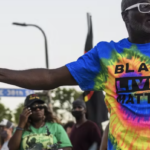By ED KEMP
Hattiesburg American
HATTIESBURG, Miss. (AP) _ There are all sorts of historical records. Just check out your library, historical society or favorite local newspaper.
But when it comes to reliability, few can match the truth hidden in skeletal remains.
“One thing about bones is that bones can’t lie,” said University of Southern Mississippi anthropology professor Marie Danforth. “The life that you led is accurately reflected in your bones.”
It’s this promise of accurate historical data _ the kind you have to dig for _ that drives Danforth’s research. She recently was named the Mississippi Humanities Teacher of the Year by the Mississippi Humanities Council.
The council annually honors teachers from all regions of the state. Each honoree receives $500 and presents a special lecture in his or her discipline to the community.
Danforth has taught at the University of Southern Mississippi for 25 years, and along the way, she’s seen all kinds of bones.
Some encounters have come at the request of local investigators, who have asked her to ID the remains of skeletons in the hopes they’ll provide a clue to missing persons investigations.
But other bones date back much further, centuries even.
For the past seven years, she and a team of students have excavated an area in Biloxi called the Moran site _ it’s on the property of Biloxi artist Joe Moran _ where the skeletons of 32 early 18th century French settlers were uncovered.
At the same time, she and a group of students have gone up to Michigan to Fort Michilimackinac to examine the skeletons of another 50 French settlers who were unearthed in the early 1960s.
The purpose of these expeditions is to get a comprehensive view of the French colonial experience from top to bottom in North America.
“It takes hours of staring at, working with, studying, reading, etc., to learn about the human skeleton,” said Tyler Cargill, a former Danforth student and 2010 USM graduate, who is now a master’s student of bioarcheology at the University of Exeter in England.
“But when you do, we have the ability to see how the person lived, if they were sick, how tall they might have been, what some of their daily habits were.”
That means studying folks who are often omitted from the historical record.
For example, many of the thousands of French civilians who came to Biloxi, briefly the capital of the Louisiana colony, were a ragtag bunch dumped from asylums, prisons and the streets.
They were transported to Biloxi as part of a failed financial scheme called the Mississippi Bubble and found disease and starvation in a land portrayed as a new-world Utopia.
“There were rats swarming the beaches, and even the rats were so hungry they were eating gun stock,” Danforth said.
Not surprisingly, these folks were not as physically robust as their fur-trading Michigan counterparts.
In fact, they were on average 4 inches shorter, thanks to a poorer diet. The Biloxi men averaged 5 feet 3 inches, with the women around 4 feet 10 inches.
There was another important difference, one that Danforth and her students hope to elucidate further in future trips to the fort through DNA testing of the bones to determine ethnicity.
While Europeans and American Indians intermingled and even married up North, there were greater strictures placed upon this intermingling in the South, particularly after the introduction of the African slave trade around 1720.
“People became very, very aware of racial groups, and people not intermixing. And setting up all sorts of law to separate people economically, spatially and all sorts of things,” Danforth said.
Master’s student of anthropology Heather Guzik said this kind of DNA demonstrates the value of her field. She’s been to both the Moran site and Fort Michilimackinac with Danforth.
“We can elaborate on the past and fill in certain gaps,” she said. “We can confirm certain historical reports and see where there might be some discrepancies.”
Danforth agrees.
“We’re sort of an independent source of data that complements the archeological record and complements the historical record,” she said. “We provide a much more complete picture of the past.”
___
Information from: The Hattiesburg American, http://www.hattiesburgamerican.com











